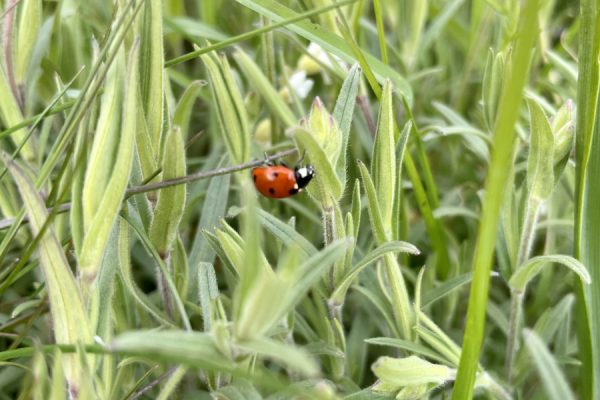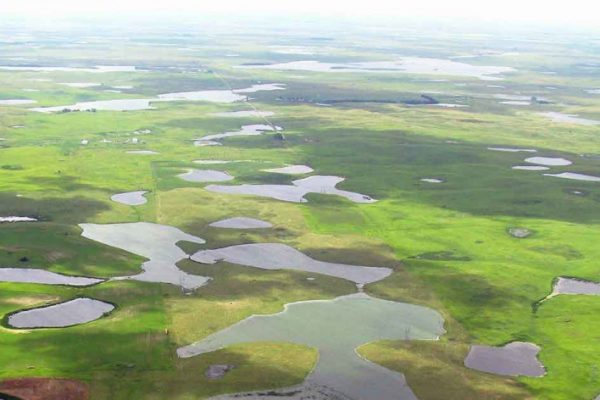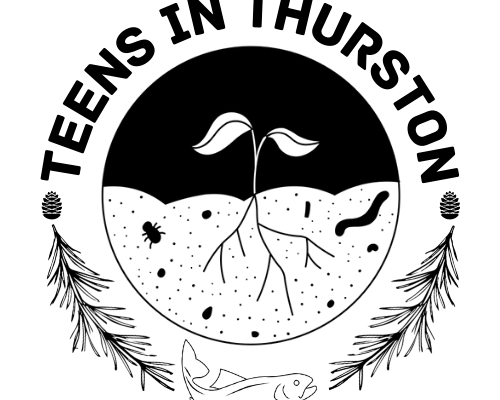Science may tell us that cows trampling a riparian zone results in fewer fish in our streams, or that logging old growth forests causes spotted owls to go extinct, but whether that is perceived as a problem or not depends on one’s values–and those values are shaped by the stories we use to guide our lives.
George Wuerthner, “The Myths We Live By” (1998)
Some of the biggest initial questions I had going into this internship six weeks ago were “Why do some farmers voluntarily choose environmental stewardship and conservation practices on their land? What are their strongest motivations?” Somewhat unconsciously exercising my training as an emerging scientist, I hypothesized that the strongest driving factor behind participation in services like TCD’s Voluntary Stewardship Program would be a personal sense of connection to their lands–more specifically, positive emotions towards the biodiversity on their land, enjoyment of its’ beauty, and a desire for it to be a pleasant place for them and their families to live as well. I didn’t feel overly confident in this simplification, but it seems as good a place to start as any. I know that I’ve chosen my field of study based on a few strong personal experiences and history–I grew up wandering in the deep forests near Mount Rainier and swimming in glacier-fed tributaries of the White River, and a stream ecology lab section of a General Biology class in 2012 when I lived in Denver, Colorado, got me hooked on the idea that urban and suburban riparian systems are just as fascinating and important as those in the “wilderness”. My experiences informed a love which drives me to read the “land” in terms of riverine topography and watersheds.

Knowing that conservation districts historically focus on working with landowners for projects on rural private property, I felt (and still feel) as if there is a big missing piece to the picture of “Why” and “Who” wishes to be a part of agricultural conservation. After all, in my personal experience, I’ve lived in a series of rented rooms and apartments for my entire teenage and adult life, fell in love with ecology while waist-deep in a polluted, hydrologically altered urban creek flowing through the middle of Speer Boulevard, and have no intent of becoming a farmer myself. Yet I feel heavily invested in supporting and promoting sustainable food systems with biodiverse agroecological production. I can pick apart my own motivations with some ease, knowing myself better than anyone else, but what about first-generation farmers? What about third- or fourth-generation farmers who decide to make a switch to regenerative practices or put part of their land into conservation easement? What about urban gardeners or volunteer Master Composters or farmers’ market shoppers? What about someone who isn’t in any of those groups, but still wants to be a part of agricultural conservation efforts? Essentially, I’ve been trying to think through Aldo Leopold’s ideas about development of land ethic to those who exist outside the stereotype of an avid outdoor enthusiast or rural landowner.

The title of Chapter 16 of The Farm as Natural Habitat, “A Refined Taste in Natural Objects” by Beth E. Waterhouse, references a phrase used by Leopold in his essay “The Round River” (1966). She deeply considers the question of “environmental motivation”, particularly as it relates to agriculture, attributing it largely to the mysterious force called “love of the land”. But how and why does one learn to love the land? Waterhouse explores motivational factors: family and community heritage, appreciation of beauty, the power of values transferred through story, the freedom to wander, rethinking relationships with time, and collectively facing our fears of environmental destruction head-on. Through her brief but illuminating essay, I realize that a better conclusion to draw about environmental motivation the disconnection of humans from our ecosystems, and indeed the natural flow of ecological time, is the core of why some people do not have a strong love for the land. Thinking of this in the inverse perhaps shows that our default individual state is to “be motivated to see the landscape as a whole, to refuse to see agricultural landscapes as sacrificial zones” (pg. 246). The questions may now be: how to preserve and nurture this state of mind, and how to build communities and institutions which center it.

This makes me I think of how to inspire a love for clean vibrant waterways, for “ugly” or “uncharismatic” animals which do not fit into our human aesthetic of beauty, a connection to land even in cities, a connection to place even in a time where many of us must move again each time the rent is raised, and the freedom to wander and slow down in an increasingly hectic and productivity-driven society with diminishing commons. Chapter 12 “Conservation and Agriculture as Nature” by Judith D. Soule speaks of a fundamental conflict between the two goals–a competition for space on the landscape. More often than not, by my own observation, the greatest conflicts between agriculture and conservation seem occur due to water-related issues (especially allocation, water-quality protection). The previous chapter, “Sustaining Production with Biodiversity” by Nicholas R. Jordan, presents the idea of centering ecological partnerships in agroecological restoration, and biodiversity protection on farms in general, in order to be a “good neighbor” contributing to the well-being of the landscape and the communities on it. Some of these partnerships are biological themselves; for example, the way a well-managed agroecosystem can utilize biocontrol of pests rather than use of chemical pesticides. When I worked for a plant pathologist at WSU Puyallup last summer, much of my job was recording data and inoculating new plants in a long-term greenhouse biocontrol experiment which aimed to discover which amount of Trichoderma spp. (a common genus of soil fungus which acts as a plant symbiont) might be most effective in protecting nursery plants against the highly infectious and destructive pathogen Phytophthora ramorum (causal agent of sudden oak death). The ecological partnership between a plant and soil biota is one that resonates with Jordan as well, and indeed should with all farmers. Most often, this association is a mutualist one (benefits to both/all partners), and to summarize the message of the chapter, a “good farm” should have the farmer treat their land and business like a mutualist ecological partnership. This includes building cooperative relationships with neighbors and other producers, perhaps reducing conflict for space on the landscape.
I’ve been thinking all week about the stories I’ve heard others tell this quarter, as well as the stories I feel compelled to write about on my ePortfolio, as I considered the quote I opened this post with. Which stories guide our lives strongly enough that we share with others, and why? Which values do each of these stories embody? Perhaps that’s why this week’s post is a series of disjointed observations and anecdotes. Making sense of my own story and values before I attempt to analyze others.
Tuesday 5/3
We had another staff meeting today, and this time we walked just a few blocks away from the TCD office for a tour the Seeds of Change: Give Back Garden at Thurston County Family and Juvenile Court! It was a privilege to learn more about this unique transformative program that offers accountability for youth that become involved with the court system with a pro-social approach, rather than punitive approaches like incarceration. The Give Back Garden grows produce for donation to the Thurston County Food Bank every spring, summer, and fall, and during the winter, youth volunteer in the food bank warehouse. While working in the garden and warehouse, youth work on social skills, personal development, problem solving skills, and positive interactions with peers.
Shane Pier, the Garden Supervisor and Tony Cleaves, the Youth Development Program (YDP) Lead, gave us a tour of the garden and talked about the program, the youth they’ve worked with, and answered any and all question. They’re incredibly kind and hilarious guys who often refer to YDP participants as “our kids” or “our babies”. A few of the kids were there working too, and shyly introduced themselves with some encouragement. They were eager to get back to work in the garden and didn’t stick with our group for long, but it was nice to meet them.


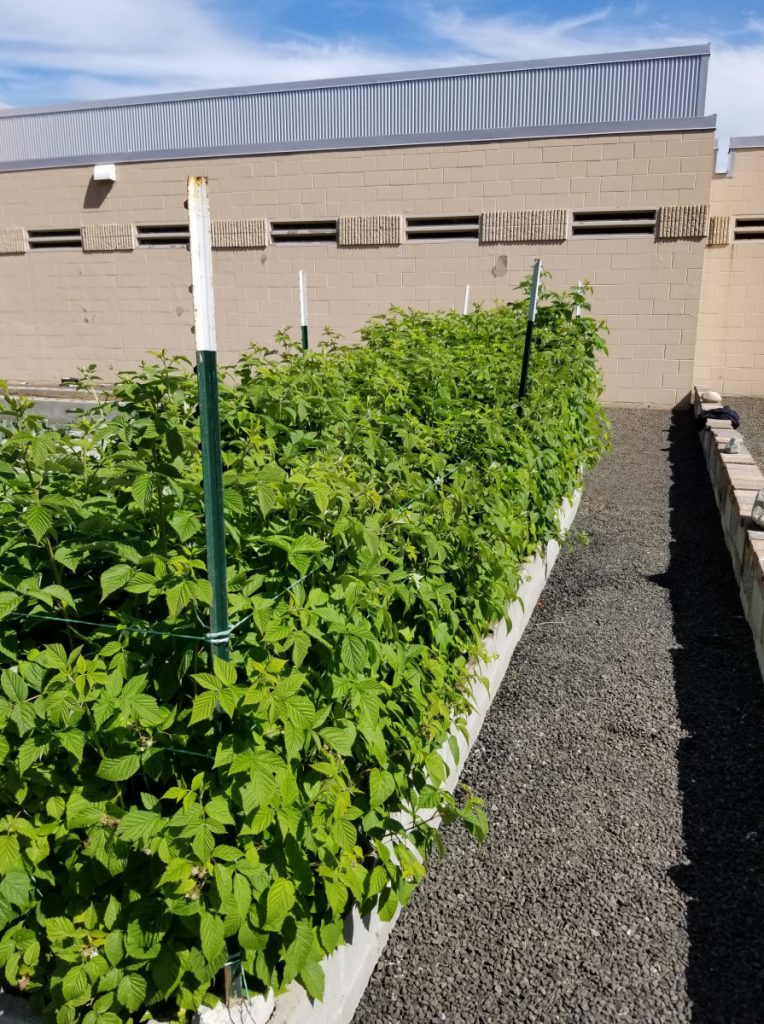
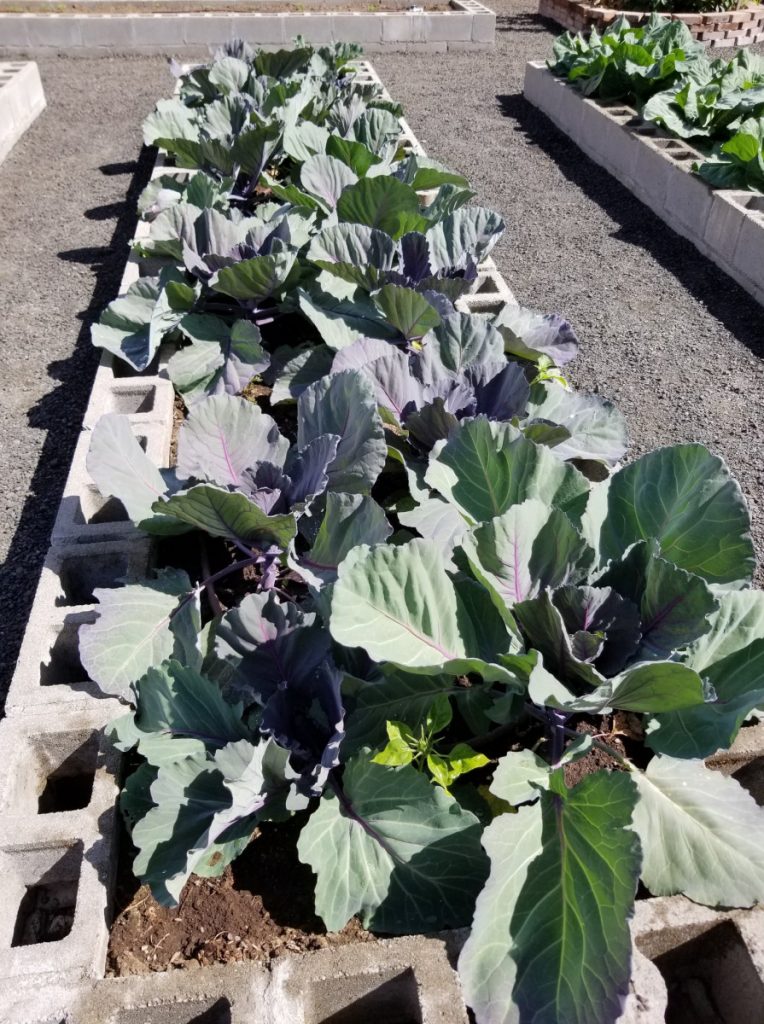
The garden itself doesn’t have much growing at the moment, as it’s still early in an unusually cold spring, but the setup is truly impressive. It’s clear that Shane is as passionate about the garden as he is about his young mentees, having helped build the space from an empty gravel lot prone to flooding into a vibrant haven with perfectly maintained raised beds, an efficient drainage system, a greenhouse, a fish pond with an elevated water storage tank for using the nutrient-rich fish waste as fertilizer, three compost bins, and even a recently planted small orchard with apple, almond, and cherry trees. YDP participants helped Shane with installing most, if not all, of these components, even the drainage system.
What struck me most was how much love and hope both Shane and Tony have for their kids. While telling inspirational stories of kids who transformed from angry, antisocial, and even hateful, to hard-working, passionate, empathetic young adults, they often teared up in gratitude and pride for how many participants stayed in touch or stuck around to continue working at the garden long after graduating from the program. Both men are loving and accepting but have high standards for each youth who opts to “serve their time” in the garden, and clearly that has a massively positive impact. I myself was grateful to have the opportunity to learn from their insights and experiences, and that the program exists for youth in Thurston County who have a chance to find positive change rather than carceral punishment for their mistakes.
Something else cool — I couldn’t believe it when I saw Ashley Lewis at the staff meeting today too! I had no idea that she was one of the Field Crew Interns this year, and it was so lovely to see her and catch up a little as we walked to and from the Give Back Garden. I got to know some of the other Field Crew Interns as well, and it seems like a great group. I wish I had the opportunity to work with them more, but it felt serendipitous and sweet to reunite with Ashley at a teaching garden of all places.
Wednesday 5/4

Nora invited me to join her on a Zoom call for the South Sound Food System Network monthly meeting this morning. I was happy to join in and listen, and found out that I would be diving into their work quickly, as the topic of focus was diversity and inclusion work in attendees’ organizations. Quite a lot to discuss in the scheduled hour!
Although our frequent discussions have touched on the topic, it was enlightening to hear Nora talk about TCD’s relationship with developing greater diversity, equity, and inclusion within the organization and the communities they serve. She pointed out that a huge barrier to address has been TCD (and indeed all conservation districts) historic focus on land ownership. This is why the district is trying to expand education, outreach, and resources for all community members, and not only focus on landowners as the population they serve. Another part of this legacy is the rule that three out of five members of the advisory board that oversees a conservation district must be landowners. This is the note I wrote from what she said, and I looked up more documentation as to the specific rule.
“There is hereby established to serve as an agency of the state and to perform the functions conferred upon it by law, the state conservation commission, which shall succeed to all powers, duties and property of the state soil and water conservation committee.
The commission shall consist of ten members, five of whom are ex officio. Two members shall be appointed by the governor, one of whom shall be a landowner or operator of a farm. At least two of the three elected members shall be landowners or operators of a farm and shall be elected as herein provided. The appointed members shall serve for a term of four years.” (Revised Code of Washington 89.08.030, emphasis my own).

While this is clearly a legal requirement for the state conservation commission, I’m still unclear on a citation for county-specific requirements. Anyhow, Nora brought up that TCD has been considering the possibility of starting a citizen advisory board in addition to the state-appointed and voter-elected oversight. Another equity barrier within the conservation district structure is that most available money for stewardship projects is reimbursement-based, resulting in financially exclusionary roadblocks for landowners who don’t have large amounts of spending cash available upfront. Best management practices also operate on a ranking system of impact to the environment, privileging large operations over smaller ones, who may wait an extremely long time to rank high enough to receive funding.
One way that TCD is showing leadership and initiative in DEI efforts is being one of the few state districts that is openly advocating for equity as an organizational priority. Many others don’t believe that equity has any place within their work, and are quite vocal about saying so. It almost goes without saying that regardless of one’s political or personal beliefs, this is objectively untrue–agriculture is an area that nearly by definition should have equity initiatives squarely within its scope of work. As for TCD’s internal structure, Nora was rightfully proud to point out that they are the first conservation district employees in Washington state (and perhaps the United States) to unionize by joining the Washington Federation of State Employees, and today district staff benefit from a strong collective bargaining agreement. (King Conservation District voted to ratify their first union contract last year as well!)
I find it interesting to think about Ostrom’s definition of an institution (“the set of formal and informal rules developed by a community to govern commons”) and actually find that TCD’s latest reforms to more traditional conservation district governance seem to be approaching the Ostrom idea of an institution, in some ways. It’s almost comical how often Nora reassures event attendees that TCD is a “non-regulatory agency”, but I think it’s important to emphasize right away, because it clearly establishes some initial credibility and trust. I won’t go into TCD’s recently troubled past too much, but as it’s all public record, I invite you to go down a truly wild rabbit hole by looking it up online and reading into the conduct of some forcibly removed board members. It is a testament to the strength of the workers and the community that TCD has become what it is today, and that they have such positive working relationships with producers.
Thursday 5/5

It was an incredibly rainy day which made for a cozy feeling in the office. I really enjoy working with Nora and Kiana, and it genuinely moves me to think they consider me a friend now. It’s going to be a little sad when the quarter ends and I don’t get to work with them anymore, but I expect to keep showing up for volunteer and workshop events from time to time at least, or even reach out as a friend to just hang out with them. I don’t understand much how to do that anymore, but it makes me happy just to consider the possibility.
As for the work itself, I finally got started on mapping the website, which I haven’t done anything like before. As far as I understand it, usually mapping happens in the initial design of a website, but our purpose is to see how many redundant or hidden links exist on the homepage, within the main menu, and identify ways the site could be more accessible. Reverse designing a website that I didn’t make (but is still built with WordPress, luckily for me) is a unique challenge but I hope it will be insightful both for my own learning and for TCD’s benefit.
My other main project of the day was also a little out of my depth, and, as silly as it may sound, something I was almost too nervous to try. Sam asked me if I’d like to try designing a logo for Teens in Thurston so he can order t-shirts for the volunteers that joined this year. I’m not a visual artist or graphic designer whatsoever, but Kiana showed me an incredibly useful icon website called The Noun Project and I decided to mess around on Canva and see what I could come up with. Nora and Kiana seemed to genuinely like my ideas and offered good feedback, so now I have a few rough draft logos to work with! Hopefully I can get some solid options done early Tuesday and send them to Sam for his feedback. I was inspired to make simple custom header images for my personal website and this ePortfolio on Canva over the weekend as well, now that I feel more competent in using more tools and templates the site has to offer.




Bibliography
Chapter 89.08 Revised Code of Washington (RCW) https://app.leg.wa.gov/RCW/default.aspx?cite=89.08
Jackson, D. L., & Jackson, L. L. (2002). The Farm as Natural Habitat: Reconnecting Food Systems With Ecosystems (Illustrated ed.). Island Press.
Noun Project: Free Icons & Stock Photos for Everything. (2022). The Noun Project. https://thenounproject.com/
Porter, M. (2018, September 4). Thurston County News – Facilitating Development in Youth. Thurston County. https://www.thurstoncountywa.gov/tchome/Pages/countynews-detail.aspx?List-ID=15


